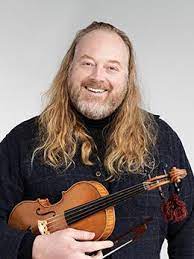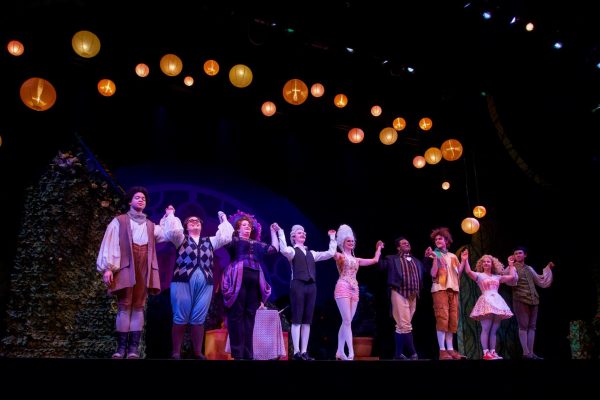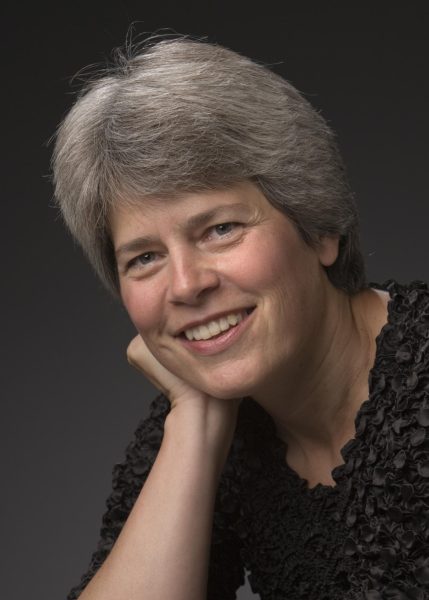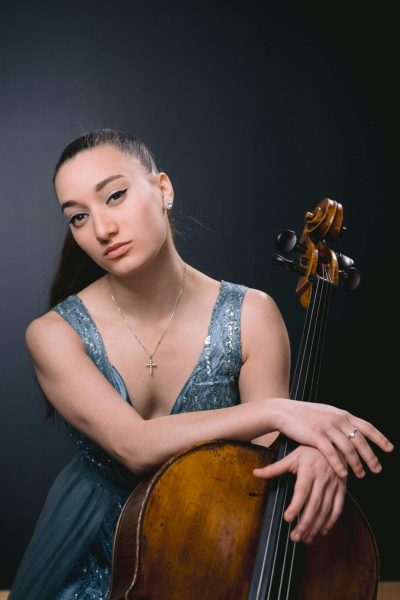Edwin Huizinga, OC ’06: Visiting Assistant Professor of Baroque Violin, Instructor of Fiddle Ensemble

Edwin Huizinga
Edwin Huizinga, OC ’06, is the visiting assistant professor of baroque violin. In addition to teaching private lessons, historical improvisation, and directing the Baroque Orchestra, Huizinga is offering a brand-new course, Fiddle Ensemble, in the fall 2023 semester. This ensemble will merge improvisation with folk music from various cultures and will be open to both College and Conservatory students.
This interview has been edited for length and clarity.
What’s your background in fiddle and folk music?
I’ve loved folk music my whole life. After graduating from Oberlin, I started an indie rock band. We played with tons of folk musicians. I did the folk festival circuit for about 10 years and loved it. I love the atmosphere behind it and around it; it’s extremely inviting. It really encourages you to be yourself as a human being.
Then I started teaching here in January. One of the first things I did here was a folk and baroque duo faculty concert titled Fire and Grace. I was hired specifically to teach baroque violin, which is a different style of playing and a different instrument than regular violin.
What prompted you to create the Fiddle Ensemble course?
All of the classes I teach are very Conservatory-centric, and you have to be at a very high level in terms of technique. I really wanted to have a course or an ensemble where I could invite anyone with some sort of proficiency, whether they’re Conservatory or College students. One thing that’s been hard to verbalize — at least in my tiny course description — is that it’s not just for fiddles, but “fiddle ensemble” is the best descriptor of the vibe I’m trying to create. I’ve already heard from people that want to play cello, claw hammer banjo, bass. I think the rule is that it has to be a melody instrument, but what is a non-melody instrument? I don’t know if that exists.
What are you most excited for with the Fiddle Ensemble?
I feel like this ensemble is going to be so amorphous, like it’ll be different every single semester. My goal for the first semester is to cover five or six unique styles of fiddle playing, folk music, or traditional music from places like the Balkans, Scandinavia, the United States, and the British Isles. I’m also gonna set everyone up at the very first class with a questionnaire that says, “What do you really care about?” because I’m hoping that every student will lead 30 minutes of one class in a tune that they believe in the most. I keep asking my students here, when they play random repertoire, “Why are you playing this? If you don’t know why you’re playing this, how am I ever going to want to hear you play it?”
Could you say more about the importance of improvisation for a classical or baroque musician?
In a way, everything you do is an improvisation, it’s more about the level of the improv. Even if you’re reading a piece of music by Mozart, you’re still improvising the dynamics, phrasing, time, and rhythm. In baroque music, you start actually having to improvise notes and ornamentation and stuff like that. And jazz is also so much about improvisation, with certain parameters of course. Folk music is kind of the same. There’s a tune that’s really simple, usually it’s just eighth notes and quarter notes. Then you fill it with ornaments, trills, turns, shakes, everything with your bow and your fingers.
What are the differences between “regular” classical violin and folk music for the fiddle?
Well, harmonically, “regular” violin play is just more complex in general, in the sense that if you’re playing a big concerto, it goes through unbelievable amounts of chords and key changes. Generally, if you take a fiddle tune, it’s just a few chords that loop. But whenever people ask me, “Are you playing violin or fiddle?” I say they’re the same. The most noticeable difference is that the fiddle players all have bow hairs that are broken, but in classical violin you take the hairs off. It’s just a different vibe.
Folk in general means how people are playing that music now. There is no such thing in my mind of historical folk music, because that’s then the traditional music of that time, and folk music is what people are doing now with that music, with that tradition. I like to use the word “folk” because it has a very positive and welcoming connotation for so many people. “Oh, folk music, I think I can do this,” you know?
How does improvisation tie in with the Fiddle Ensemble?
Without calling it an improvisation class, every class is going to ask, “How do we turn that tune into something of our own?” I think some people have tunnel vision here, in terms of improvisation, and that’s always gonna be the case. But for the people that are looking for more, looking to expand their horizons and musical voice, I want to provide that.
Another thing I’m not sure if we’re gonna get to in this course is writing your own tune from scratch, which is another form of improvisation. Over the course of a few weeks, I’d like to find out from people what they really gravitate toward from what we’ve learned so far. Maybe they just love klezmer music and so they spend a couple of weeks immersing themselves in klezmer — figuring out the general structure, modes, keys, and rhythm that makes it klezmer.
The thing about improvisation is that you’re just drawing from your own toolbox. If you’ve never done it before, your toolbox is pretty small. If you play jazz, or if you play classical violin and you’ve done it a little bit, your toolbox is larger. And the best improvisers in the world have just tried the most amount of different things. That’s what it comes down to.





